charlesnoble
-
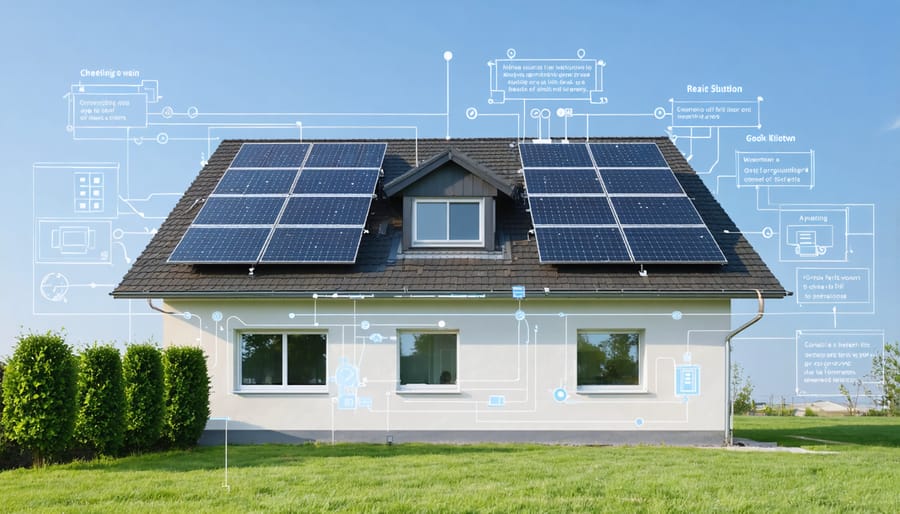
Essential Residential Electric Code Rules That Keep Your Solar Installation Safe
Mastering residential electrical code requirements safeguards your home and family while ensuring your DIY solar installation meets all legal standards. The National Electrical Code (NEC) establishes critical guidelines for everything from wire sizing and grounding requirements to proper circuit protection and disconnect placement. Whether you’re planning a new solar array or upgrading your home’s electrical…
-

Micro Solar Panels Are Perfect for These Portable Power Projects
Micro solar panels are revolutionizing how we power our everyday devices, from backyard lighting to portable electronics. These compact powerhouses, typically ranging from 1 to 20 watts, pack the same photovoltaic technology as their larger counterparts into a palm-sized package. Whether you’re a weekend camping enthusiast or a budding renewable energy hobbyist, these miniature solar…
-
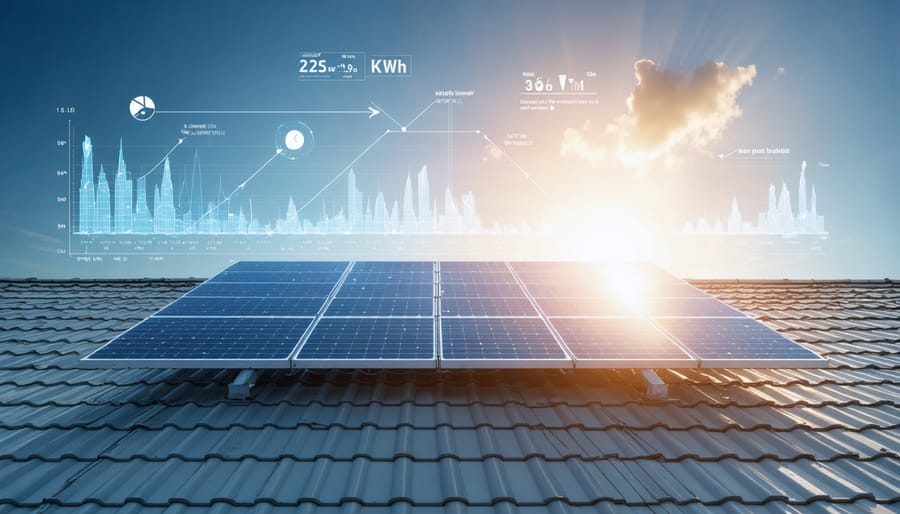
Make Your Solar Panels Work Harder: Real kWh Output Secrets
Calculate your solar panel’s daily kilowatt-hour (kWh) output by multiplying its wattage rating by your location’s peak sun hours and applying a 75% efficiency factor. A typical 300-watt panel in a region with 5 peak sun hours generates approximately 1.12 kWh per day, demonstrating the real-world benefits and limitations of solar power. Understanding your actual…
-

Your Dream Home Can Run on Pure Sunshine (Here’s How)
Transform your home into a self-sustaining powerhouse that produces as much energy as it consumes. Zero-energy homes represent the pinnacle of sustainable living, combining advanced architectural design with cutting-edge renewable technology to eliminate utility bills while maximizing comfort. Through strategic implementation of benefits of solar energy, superior insulation, and smart home automation, these revolutionary dwellings…
-
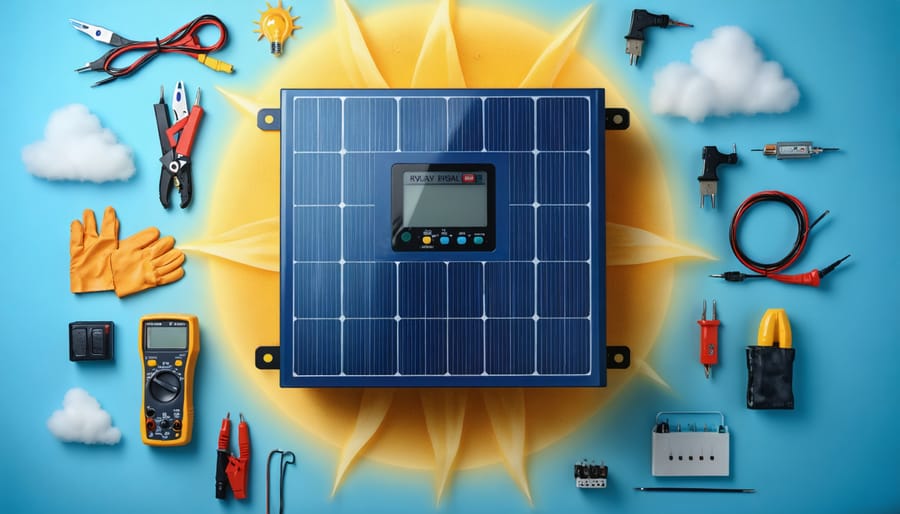
Fix Your Solar Inverter Problems Fast (DIY Troubleshooting That Works)
Monitor your solar inverter’s error codes and display indicators daily – these warning signs often reveal developing issues before complete system failure occurs. Test DC voltage inputs and AC outputs using a multimeter when your system’s performance drops, ensuring readings match manufacturer specifications. Check all cable connections, terminals, and grounding points for corrosion, loose fittings,…
-

What Size Solar Panel to Charge 12V Battery
The solar panel size depends on factors like the battery capacity, battery type, desired charge time, and type of charge controller used. In this comprehensive guide, we will discuss in detail the step-by-step process to calculate the ideal solar panel size to charge a 12V battery. We will also provide solar panel size recommendations for…
-

How to Charge an Electric Bike With Solar Power
The most straightforward way to charge an electric bike with solar power is by using portable solar chargers, including solar panels, an inverter, charge controllers, and cables to connect everything to the e-bike battery. You can also build a custom solar charging system by wiring the solar panel directly to a Maximum Power Point Tracking…
-

Lead Acid Battery Voltage Charts
Battery voltage charts provide an easy way to estimate a battery’s state of charge. You can simply measure the voltage of the battery and use a voltage charge to estimate the current charging level of the battery. But remember that each type of lead acid battery will have a different voltage range and that voltage…
-

Renogy vs Battle Born: Comparing Two Popular Battery Brands
When it comes to powering your off-grid adventures or ensuring your renewable energy system functions efficiently, there are two top names in solar energy storage: Renogy vs Battle Born. Renogy is known for its affordable prices. Battle Born is known for top-notch quality and long life. This article looks at how these two brands measure…
-
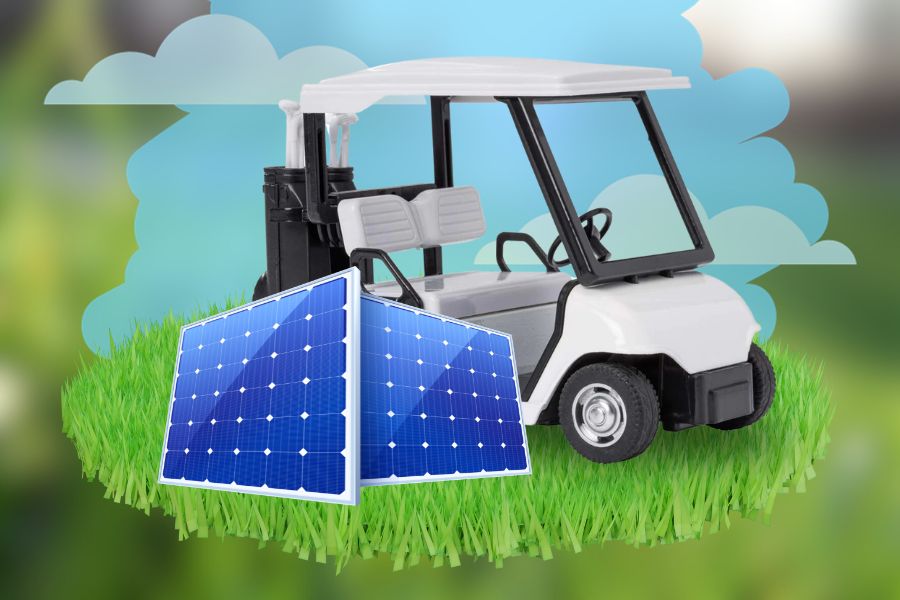
How to Charge a Golf Cart With Solar
Charging a golf cart with solar panels involves equipping it with photovoltaic panels, connecting them to a charge controller, and then to the golf cart batteries. As the panels absorb sunlight, they convert it to electricity, which then gets regulated by the charge controller to provide a steady and appropriate charge to the batteries. This…
-

How Long Will a 100Ah Battery Run a TV
A 100Ah battery’s ability to power a TV depends on the battery chemistry, the TV’s energy consumption, and losses through voltage conversion. The key is calculating the battery’s usable capacity and the TV’s hourly energy draw. In general, a 100Ah lithium battery can run an LED TV for 15-25 hours while a 100Ah lead acid…
-

What Size Solar Panel to Charge 100Ah Battery?
Determining the right solar panel size to charge a 100Ah battery involves considering several key factors, including the battery voltage, battery’s capacity, battery type (lead-acid vs lithium-ion), how much you deplete the battery each day, the solar charge controller used, and the amount of sun your location receives. In this guide, we’ll cover all the…
-
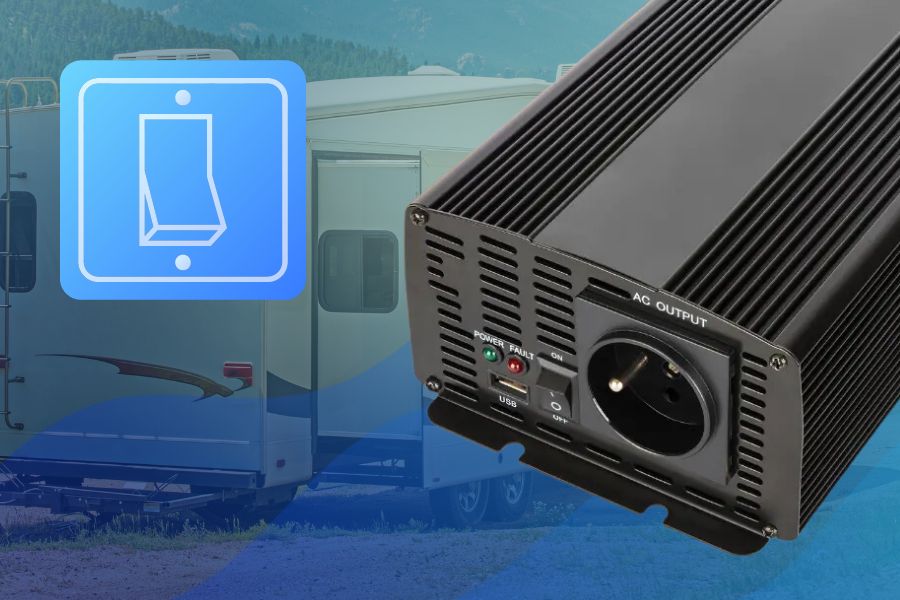
Should an RV Inverter Be Left on When Plugged In?
Generally, RV inverters should be turned off when not in use to avoid unnecessary battery drain. However, whether an RV inverter should be left on or off when plugged in depends on several factors, primarily the type of inverter and the manufacturer’s recommendations. In this comprehensive guide, we’ll look in-depth at how RV inverters work,…
-

Powering Your Wrist: Automatic vs. Solar Watch Comparison
In a world where technology continues to shape how we interact with time, wristwatches have evolved beyond mere timekeepers. The choice between an automatic vs solar watch has become a defining feature for watch enthusiasts and everyday wearers alike. Automatic watches, powered by wrist movement, excel in craftsmanship but may require frequent adjustments for time…
-

Do Solar Power Banks Work?
Solar power banks are able to effectively collect, store, and deliver solar energy to charge electronics on the go. But do solar power banks work and truly live up to the promise of unlimited, eco-friendly power? While they do have limitations, solar power banks can be a versatile solution when you need portable renewable power.…
-

How Long Do Solar Watches Last?
Solar watches can last a long time, some even for decades if you take good care of them. In this article, we will discuss the average lifespan of solar watches, what can make them last longer, and how to keep yours running for a long time. So, without further ado, let’s jump right in. What…
-

How to Charge a Solar Watch
A solar watch is powered by light energy from the sun. It converts sunlight into electricity using solar cells to charge an internal battery in the solar watch. This allows the watch to run without ever needing a battery replacement. But to keep a solar watch powered, you must regularly expose it to light. Charging…
-

Do AGM Batteries Need to Be Vented?
Yes, AGM batteries do need to be vented. Even though they produce relatively less hydrogen gas compared to conventional batteries, AGM batteries can still release hydrogen gas in certain overcharge conditions. Ventilation provides a safety release for these gases. This comprehensive guide will cover all you need to know about venting AGM batteries and hydrogen…
-

Bonding Neutral and Ground at Main Panel
Bonding the neutral and ground wires in the main electrical service panel is necessary for safety and compliance with the National Electrical Code. This bonding serves critical functions like completing the fault current path and limiting the voltage difference between the neutral and ground wires. In this article, we’ll cover the purpose of neutral-ground bonds,…
-

Micro Inverter vs String Inverter: Which Is Better for Your Solar System?
In the ever-evolving landscape of solar energy, choosing between micro inverter vs string inverter has become a pivotal decision for residential and commercial solar installations. Microinverters and string inverters are different technologies for converting the DC power generated by solar panels into usable AC power for your home. But which one is better for your…
-

Sodium Ion vs Lithium Batteries
Sodium ion batteries (NIBs) vs lithium ion batteries (LIBs) are two of the most promising battery technologies for a wide range of applications. Sodium ion (Na ion) batteries are cheaper and more eco-friendly than lithium-ion (Li-ion) batteries. However, they don’t hold as much energy or last as long in charge cycles. They’re suitable for big…
-
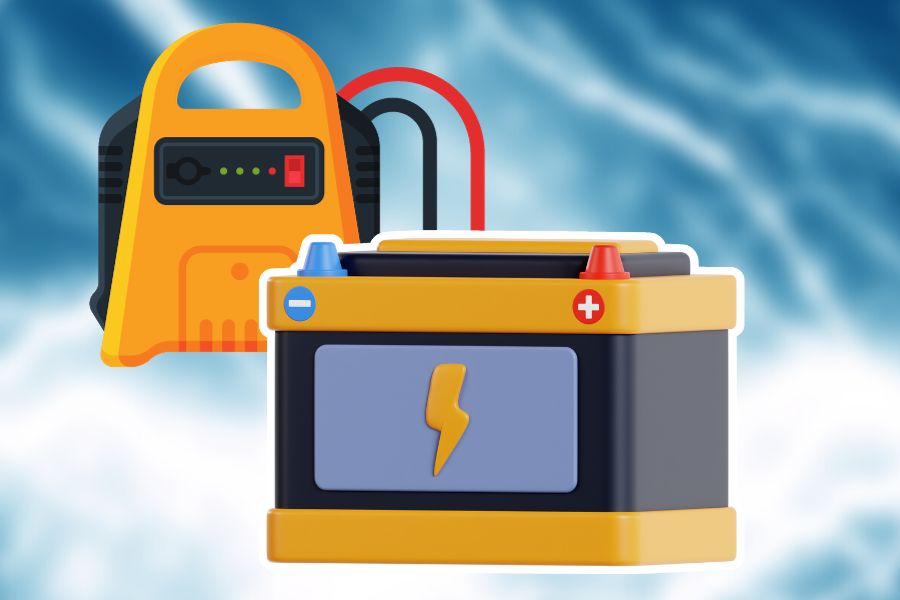
How to Check Inverter Is Charging Battery
You can check if your inverter is properly charging the battery using a few simple methods. Observing the inverter’s status lights, measuring battery voltage with a multimeter, and performing a load test are straightforward ways to confirm charging status. In this article, we will follow step-by-step instructions for checking whether your inverter is charging your…
-

Lifepo4 Voltage Chart: Understanding Battery Capacity, Performance and Charging
A LiFePO4 battery voltage chart displays how the voltage is related to the battery’s state of charge. These charts vary depending on the size of the battery—whether it’s 3.2V, 12V, 24V, or 48V. This article will dive deep into interpreting these charts and their practical implications. We’ll also cover the features and workings of LiFePO4…
-

Should You Use a Separate Pump for Solar Pool Heater?
Using a separate pump specifically for your solar pool heater is more beneficial than relying on your main pool filter pump. A dedicated solar pump optimizes flow rate, maximizes efficiency, extends equipment life, and reduces operating costs. This article will explain the pros and cons of adding a separate solar pump versus tapping into your…
-

Fixing Solar Lights With Nail Polish
Fixing solar lights with nail polish is possible by creating a clear, protective coating over the solar cells that helps reflect sunlight more efficiently. This allows the solar panel to absorb more sunlight and charge properly so the light turns on. This comprehensive guide gives you a step-by-step method to fix solar lights using nail…
-
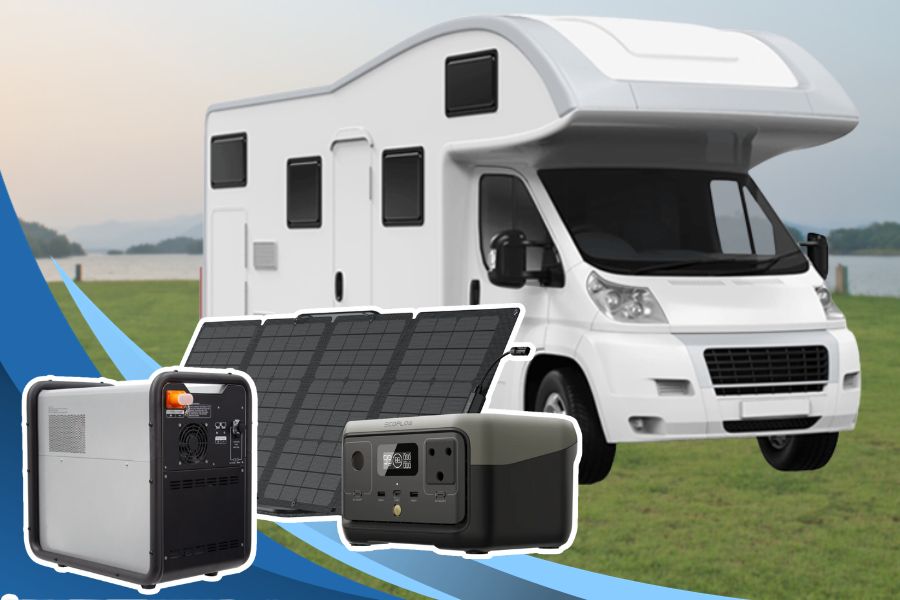
What Size Generator Do I Need for My RV?
To determine the appropriate generator size you need for your RV, calculate your electrical requirements and choose a unit that meets those needs without excessive capacity. This article will discuss the importance of selecting the right generator size and a step-by-step guide on how to size your RV generator, with a special focus on solar…
-

Do Solar Lights Attract Bugs?
Yes, solar lights can attract bugs, but how much they attract depends on the bulb type and brightness. In this article, we’ll talk about how different types of solar lights affect bug attraction, the colors that attract or scare away bugs, and other factors that affect bug attraction, as well as what you can do…
-

What Happens to Solar Power When Batteries Are Full?
When solar batteries are full, what happens is that the excess solar power will either be diverted elsewhere for usage or wasted, depending on whether your system is grid-tied or off-grid. Grid-tied systems can send extra solar power back to the electric grid, while off-grid systems may need to dump excess solar energy unless there…
-

How to Reset Inverter Overload
When your inverter is overloaded, it can lead to an unmistakable and often annoying beeping sound. It involves steps to reset inverter overload to ensure the device returns to normal operation and avoids potential damage. Depending on the inverter model, this can involve using a reset button or manually power cycling the device. This guide…
-

Ring Solar Panel Not Charging: A Troubleshooting Guide
Insufficient sunlight, compatibility problems, defective parts, or faulty installation often cause a Ring solar panel not charging. With the right information and a systematic approach, solar energy can power your Ring devices up quickly. In this guide, you’ll learn step-by-step troubleshooting tips to get your Ring solar panel charging again. Let’s begin troubleshooting your solar…






























